
What is the difference between equine conformation and posture?

CONFORMATION cannot be changed.
It’s the BASIC STRUCTURE dictated by the skeleton which consists of individual bones held together by tendons and ligaments.
POSTURE can be changed.
It is the ARRANGEMENT OF THE SKELETAL STRUCTURE based on organization by the soft tissue connecting each of the bones.
Why is it important for you to understand this difference?
Because you can influence posture negatively or positively. By recognizing what’s possible and how to do it, you can enable yourself AND your horse to look more impressive and be healthier for longer… or you can contribute to gradual decline.
Believe it or not, your posture can affect your horse’s posture (along with nutrition, saddle equipment, hoof maintenance, dental care, exercise methodology and environment). Each of these plays a big role in a horse’s ability to carry himself in a healthy way.
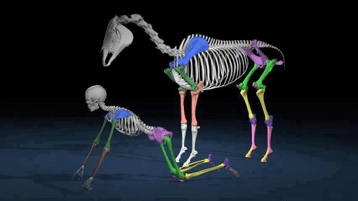
Just like horses, we too, are a stack of bones held together by soft tissue. That’s our basic Conformation. How we carry our bodies, well that’s an example of Posture.
If we allow our soft tissues (muscles, ligaments, tendons, fascia) to torque our bones in an unbalanced way, we end up with a re-aligned structure likely to cause our health to decline.
For example, hunching over your mobile phone or iPad as you read this post could result in your having slouched shoulders and a rounded back.
If you walk around in a hunched posture, you’ll be stacking your vertebrae in a way that stresses your soft tissues. This will eventually result in reduced quality of your biomechanics…and very likely pain.
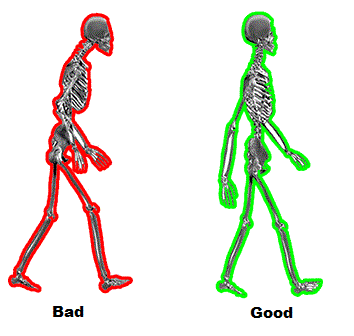
It’s important to check your posture and re-stack your bones after you stand up! By re-stacking, we mean to be conscious of aligning all of your bones to be vertically AND horizontally stacked (lined up) in correct balance.
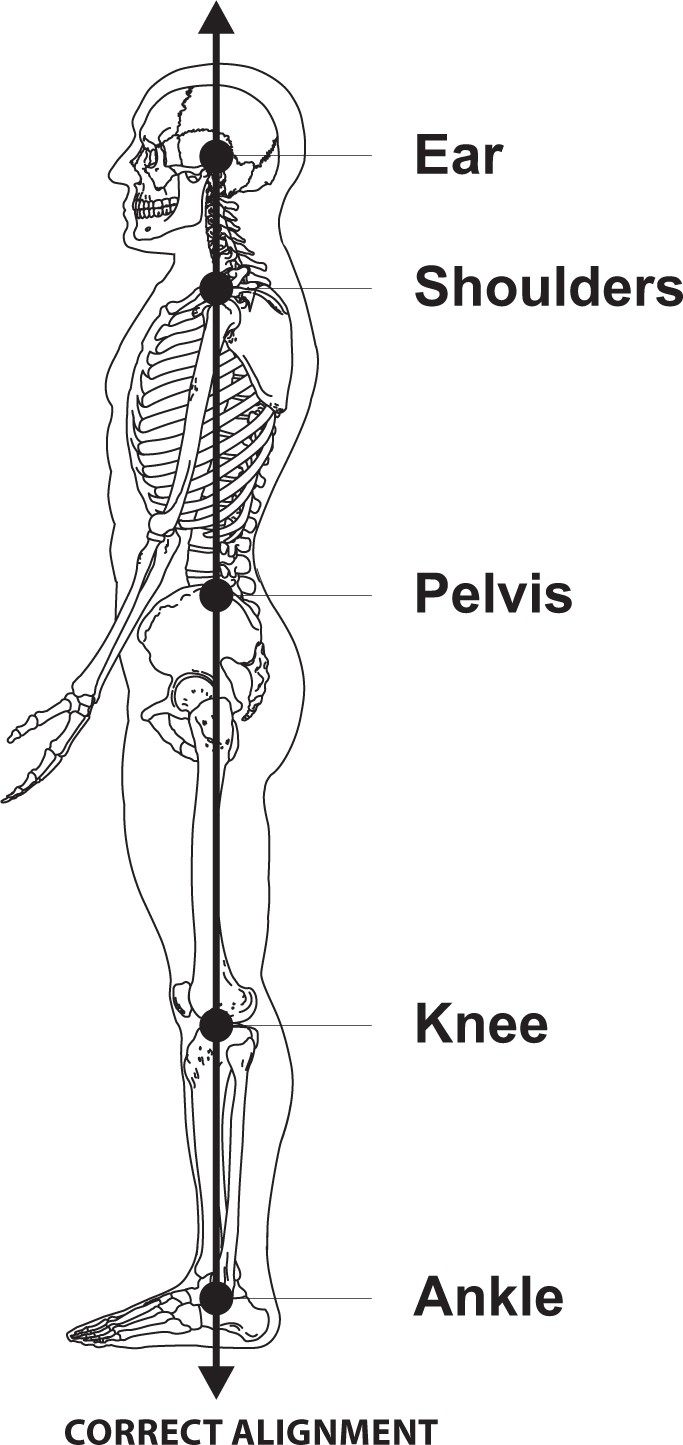
When you’re riding, your bones from hips down to heels need to be organized at appropriate angles… but more about that in our next blog in this series.
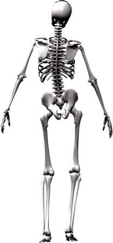
Let’s just think about this horizontal issue for a minute: When you look at this illustration of a human skeleton “out of alignment” horizontally, can you just imagine what this would feel like to your horse? What kind of realignment of his/her skeleton would be necessary to carry you and travel straight? For tips on Posture be sure to read our article from Janice Dulak [Pilates for Dressage] and get ‘Pro Tips on Posture’.
Are some horses with certain conformational traits better at performing certain tasks?
Let’s take, for example, the cutting style Quarter Horse.
Some believe that downhill horses (withers lower than their croups), are better for crouching down low in the front, which is required for doing great cow work.
Whether this is in fact true, some cutting horses may not always be perfect for the high level dressage ring.
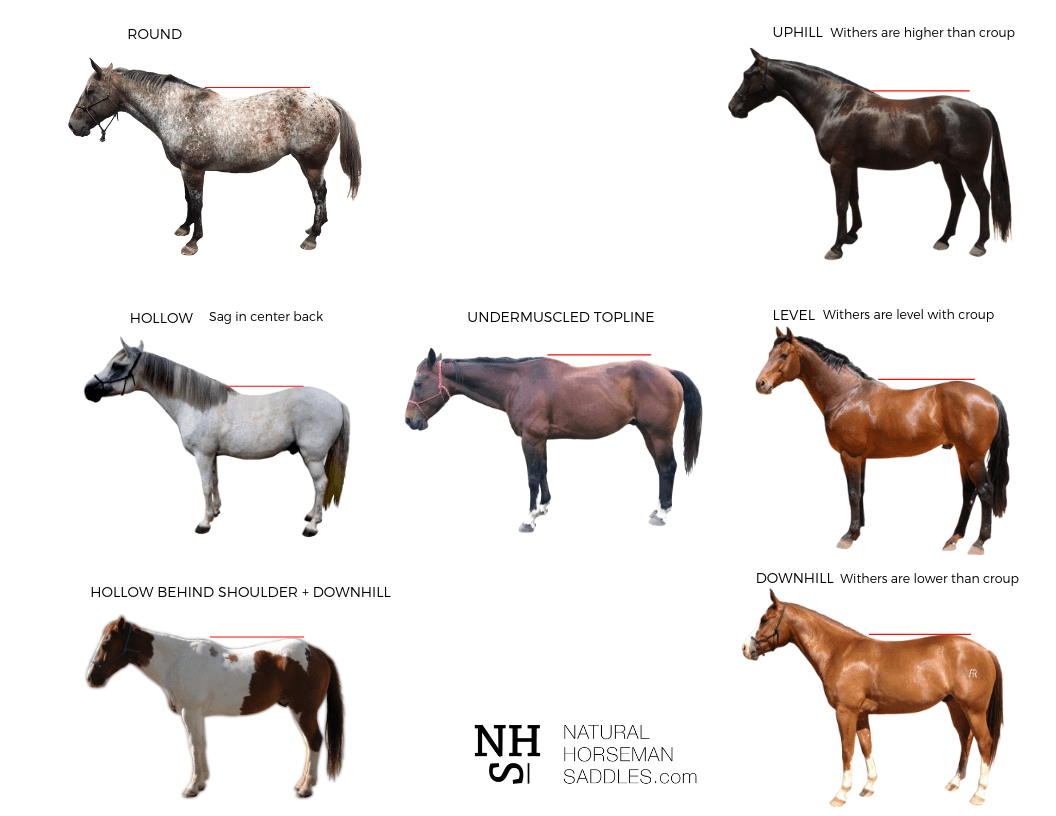
Top dressage horses are usually higher in the wither than the croup…or at least level. They are desired to have certain shoulder angles, leg segment proportions, length of back/neck ratio… Even the shape of their jaws will be considered when evaluating potential.
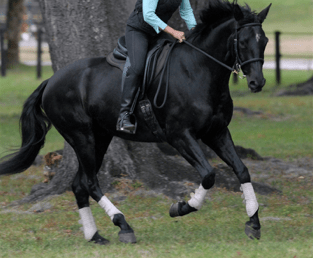
Does that mean we can’t take up other pursuits on horses with less than perfect conformation for a particular sport? NO. Not at all.
But to achieve the healthiest biomechanics and highest level possible, setting up good saddle equipment properly should be taken into consideration.
There are some simple ways by which we can improve a horse’s born limitations, while also improving comfort. This involves certain tools we’ll outline later.
How do you change Posture?
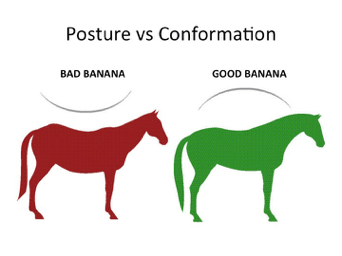
sagging underline profile, which brings with it a host of damaging biomechanics.
With the right equipment and training, many Postural issues CAN BE improved. This can return the horse to its original Conformational potential.
We CAN re-train a horse’s body to be stronger.
We CAN help the horse function with more efficient biomechanics.
We CAN support movement and balance rider weight to allow for less stress on joints and muscles.
All of this can promote longevity.
What can we do to help horses with Conformational and Postural Challenges with riding?
Horse and rider must be comfortable. That’s a given. One party having comfort over the other only leads to disharmony between horse and rider.
Riders need :
- A correctly balanced saddle: helps with the rider’s body position and an independent seat.
- Appropriate saddle for individual’s conformational construction – height, weight, leg length, etc.
- A quality saddle designed to perform well in the chosen discipline.
- Security and Stability
Horses need :
- A balanced rider with an independent seat.
- A saddle fitting correctly to accommodate movement at all gaits.
- A customizable saddle for unique conformation and or posture, still effective even after changes.
- Protective and supportive interface under the saddle providing impact protection, enhancing shoulder relief, rider balance and allowing for good moisture accommodation, air support and blood flow.
So how can we be sure we’re looking after Rider and Horse?
A saddle built to accommodate a horse’s expanding body while traveling is a big “leg up”. But whether or not you have a great saddle, the principle most commonly known as SHIMMING can be ongoing help. Sometimes shims are also referred to as ‘inserts’, not to be confused with the inner core of the saddle pad itself.
Shimming is a way for us to support and protect areas of the horse while postural challenges are being addressed and repaired OR, Shimming can be a way to accommodate Conformational deficiencies long term.
Shims increase a horse’s ability to access a correct way-of-going/traveling.
They can help engage the strong pillars of front end support by not overweighting them… While facilitating the strongest power driving levers (the hind end) to operate from deep underneath the trunk (abdominal structure and back) so it can lift and carry. All while remaining comfortable!
We look forward to sharing more with you in our Saddle Fit Science Blog on the important topic of SHIMMING. Stay tuned for future posts to explore the differences in Horses’ Conformation and Posture and how we can improve our horse’s experience and our own!
Our Saddle Pads, Tapered Foam Shims and Smartflx foundation by Natural Horseman Saddles (for both English and Western Riders) can make a huge difference for you and your horse. No matter how challenging the shape or size.
If you’d like to get ‘in depth’ with Shimming – See our 4 part series titled ‘Principles Of Shimming’. You can find Part 1 – HERE
